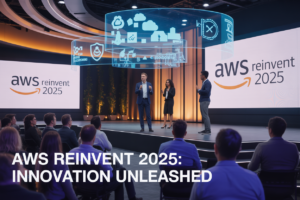Ever stared at a massive firehose of data wondering how on earth companies like Netflix handle millions of streaming events per second without imploding? That’s where Apache Kafka enters the picture, and no, it’s not named after a bug.
Stick with me for the next few minutes, and you’ll finally understand why developers won’t stop talking about Apache Kafka basics like topics, brokers, and event streams.
Think of Kafka as the nervous system of modern data architecture – it doesn’t just move data; it transforms how entire organizations function.
The beauty of this open-source platform isn’t just its ability to handle ridiculous volumes of data. It’s how it makes complicated event streaming feel almost… manageable?
But here’s what most Kafka tutorials get wrong about brokers…
Understanding the Apache Kafka Ecosystem
What makes Kafka the leading event streaming platform
Kafka dominates the event streaming landscape because it handles massive data volumes without breaking a sweat. Think millions of messages per second with millisecond latency. Its durability guarantees your data survives even when servers crash, while the distributed architecture scales horizontally across clusters. Companies like Uber, Netflix, and LinkedIn depend on Kafka because it simply doesn’t crack under pressure.
The origin and evolution of Kafka at LinkedIn
Kafka began in 2010 at LinkedIn when engineers Jay Kreps, Neha Narkhede, and Jun Rao needed something better than existing messaging systems. They faced a data deluge that traditional solutions couldn’t handle. Their creation – named after writer Franz Kafka because it’s “good at writing” – initially processed LinkedIn’s activity stream and metrics. Now open-sourced through Apache, it’s evolved from simple messaging to a complete streaming platform powering real-time applications worldwide.
How Kafka fits into modern data architectures
Kafka sits at the heart of modern data architectures as the central nervous system connecting disparate systems. Gone are the days of point-to-point integrations that become maintenance nightmares. Instead, Kafka creates a single source of truth where producers publish once and multiple consumers access data on their terms. This decoupling transforms static data pipelines into flexible real-time streams that feed everything from analytics to microservices to AI systems.
Key components of the Kafka ecosystem
The Kafka ecosystem packs serious firepower beyond just the core broker. Kafka Connect handles data import/export with pre-built connectors for databases, cloud services, and more. Kafka Streams lets you transform and process data with simple Java APIs. Schema Registry ensures data consistency across systems, while ksqlDB brings SQL powers to streaming data. Together, these components create a complete platform for building event-driven applications without breaking a sweat.
Kafka Topics – The Foundation of Data Organization
How topics function as the core data structure
Topics are Kafka’s bread and butter. Think of them as filing cabinets where your data gets organized into logical categories. When you publish a message to Kafka, you’re not just throwing it into some generic pool—you’re placing it into a specific topic that other applications can subscribe to. Simple, but powerful.
Partitioning strategies for optimal performance
Smart partitioning can make or break your Kafka implementation. When your data volume explodes, partitions let you split the load across multiple brokers. The magic happens when you choose the right partitioning key—customer ID, geographic region, or timestamp. Pick wrong, and you’ll end up with the dreaded “hot partition” bottleneck.
Topic replication for enhanced data durability
Kafka doesn’t play games when it comes to data safety. Topic replication is your insurance policy against server failures. By maintaining identical copies of your partitions across different brokers, Kafka ensures your precious events survive even when hardware goes up in flames. Most production systems run with a replication factor of 3—enough redundancy without wasting resources.
Retention policies and data lifecycle management
Kafka isn’t your grandpa’s message queue that forgets messages after they’re consumed. It’s a time machine for your data. You control exactly how long messages stick around—hours, days, or forever. Some teams keep transaction data for 7 days, while compliance-heavy industries might preserve records for years. The beauty? You decide based on your business needs.
Real-world examples of effective topic design
In e-commerce, smart companies create separate topics for orders, shipments, and inventory updates. Financial institutions partition payment topics by currency or amount ranges. Media streaming platforms organize content consumption events by genre or user segment. The pattern? Effective topic design mirrors your domain’s natural boundaries while optimizing for your most frequent access patterns.
Kafka Brokers – The Engine Behind the Scenes
A. The role of brokers in message storage and distribution
Think of Kafka brokers as the backbone of your event streaming setup. These workhorse servers store messages, handle client requests, and coordinate data distribution across your system. When producers fire off events, brokers catch them, stamp them with offsets, and make them available to hungry consumers who need that data. The magic happens behind the scenes – brokers manage partitions, replicate data for safety, and keep everything humming along efficiently.
B. Setting up a reliable broker cluster
Building a rock-solid Kafka broker cluster isn’t rocket science, but you need to get a few things right. Start with at least three brokers to handle failures gracefully. Your server.properties file is command central – configure your broker IDs, listener ports, and log directories here. The real power comes from tweaking replication factors (aim for 3) and ensuring your brokers run on separate machines. This way, when one server decides to take a nap, your system keeps churning along without missing a beat.
C. Understanding the controller broker
Every Kafka kingdom needs a ruler, and that’s your controller broker. One broker automatically gets crowned controller during cluster startup, and this special node manages all the administrative tasks. It watches for broker failures, reassigns partition leadership when servers go down, and maintains the system’s heartbeat. The controller broker keeps a sharp eye on Zookeeper (or the Kafka metadata system in newer versions) to track cluster changes. When the controller itself fails, another broker quickly grabs the crown to keep everything running.
D. Scaling brokers for high-throughput applications
When your data pipeline starts feeling the heat, scaling your broker cluster is the go-to move. Adding brokers isn’t just about handling more messages—it’s about spreading the load smartly. Each new broker shares the partition burden, letting you process more data without breaking a sweat. The real trick is balancing partitions across brokers to avoid hotspots. Tools like Kafka’s partition reassignment tool help redistribute data when you expand. Remember to monitor broker metrics like CPU, memory, and network throughput so you know exactly when it’s time to grow your cluster.
Event Streams Explained
Event Streams Explained
A. The event-driven paradigm and its advantages
Think of event-driven architecture as the gossip network of the tech world. When something happens, everyone who cares gets notified immediately. No waiting around, no checking in repeatedly. This approach slashes system coupling, boosts scalability, and lets your applications react in real-time to business moments that matter. The result? More responsive systems that can evolve independently.
B. Differences between event streams and traditional messaging
| Traditional Messaging | Event Streams |
|---|---|
| Point-to-point communication | Many-to-many communication |
| Messages consumed once | Events retained and replayable |
| Queue-based (remove after processing) | Log-based (persistent history) |
| Transaction-focused | Timeline-focused |
| Usually synchronous responses | Typically asynchronous |
Traditional messaging is like passing notes in class – once read, they’re gone. Event streams? More like writing in a shared journal everyone can flip back through whenever needed.
C. Stream processing fundamentals
Stream processing is all about handling data while it’s in motion. Instead of collecting everything in a database first, you process each piece as it flows by. Imagine sorting mail as it comes through the slot rather than letting it pile up first. Key concepts include windowing (grouping events by time), stateful operations (remembering context), and continuous queries that never stop running.
D. Exactly-once semantics in event streaming
The holy grail of event processing isn’t just delivering messages – it’s guaranteeing they’re processed exactly once. Not zero times (data loss), not multiple times (duplicates). Kafka nails this through idempotent producers, transaction IDs, and consumer offsets. Think of it as making sure each domino in your elaborate setup falls exactly once, no matter what disruptions happen.
E. Building event sourcing applications with Kafka
Event sourcing flips the database model on its head. Rather than storing current state, you log every change that got you there. Kafka’s perfect for this – it’s essentially a giant, distributed change log. Build apps this way and you gain superpowers: perfect audit trails, time-travel debugging, and systems that can reconstitute state from scratch. It’s like having a DVR for your entire application’s history.
Building Resilient Kafka Applications
Building Resilient Kafka Applications
A. Producer Best Practices for Reliable Message Delivery
Kafka producers aren’t “set it and forget it” tools. Smart producers use acknowledgments (acks=all), retry logic, and idempotence to guarantee message delivery. Without these safeguards, you’re basically throwing messages into the void and hoping they land somewhere. Nobody wants that kind of uncertainty in their data pipeline.
B. Consumer Group Strategies for Parallel Processing
Consumer groups are Kafka’s secret weapon for scaling. By distributing partitions across multiple consumers, you can process massive streams in parallel. The magic happens when you balance partition count with consumer count—too few partitions creates bottlenecks, too many wastes resources. Finding that sweet spot takes experimentation.
C. Designing Fault-Tolerant Architectures
Your Kafka architecture needs to survive chaos. Start with multi-broker clusters (minimum three brokers), replicate topics across them, and implement proper partition assignments. When disaster strikes—and it will—you’ll thank yourself for building redundancy into every layer. Remember: single points of failure are ticking time bombs.
D. Monitoring and Observability Essentials
Flying blind with Kafka is a recipe for disaster. Implement comprehensive monitoring covering broker metrics, consumer lag, and producer throughput. Tools like Prometheus and Grafana give you real-time visibility. The best Kafka engineers don’t wait for problems—they spot concerning patterns before they become production-stopping nightmares.
Kafka in Action – Common Use Cases
Kafka in Action – Common Use Cases
A. Real-time analytics pipelines
Kafka shines when you need to process data as it happens. Think e-commerce sites tracking clicks, stock markets monitoring price changes, or IoT devices sending sensor readings. These systems pump events into Kafka, which feeds analytics engines that transform raw data into actionable insights—all within milliseconds.
B. Microservices communication
Tired of brittle point-to-point connections between services? Kafka solves this headache. Services publish events without caring who consumes them. Your order service publishes “Order Placed” events, and inventory, shipping, and analytics services all listen independently. If one crashes, others keep working—that’s loose coupling at its best.
C. Log aggregation and processing
Managing logs across hundreds of servers is a nightmare without Kafka. It collects logs from your entire infrastructure—web servers, applications, databases—and funnels them to storage systems like Elasticsearch or monitoring tools. When your app crashes at 3 AM, you’ll thank Kafka for centralizing those error logs.
D. Data integration across systems
Breaking down data silos between departments? Kafka’s your secret weapon. It connects legacy systems, modern databases, and SaaS applications through a central nervous system of events. Sales data flows to marketing systems, customer updates propagate everywhere they’re needed—all without custom integration code for each connection.
E. Event-driven microservices architecture
The most powerful Kafka implementations don’t just use it as a message bus—they make events the core of their design. Systems record business events like “Payment Received” or “Shipping Address Changed” in Kafka topics, creating a shared timeline of everything happening in your business that any service can tap into when needed.
Taking a deep dive into Apache Kafka fundamentals reveals a powerful ecosystem designed for handling real-time data streams. From the organizational structure of topics to the operational capabilities of brokers, Kafka provides a robust foundation for modern event-driven architectures. The resilience built into Kafka’s distributed design makes it an ideal choice for mission-critical applications that require high throughput and fault tolerance.
Whether you’re just starting your Kafka journey or looking to optimize your existing implementation, understanding these core concepts is essential for success. Consider exploring some of the common use cases we’ve discussed to see how Kafka might solve your specific data streaming challenges. With its scalability and flexibility, Apache Kafka continues to be a cornerstone technology for organizations seeking to harness the power of real-time data processing in their applications.




















